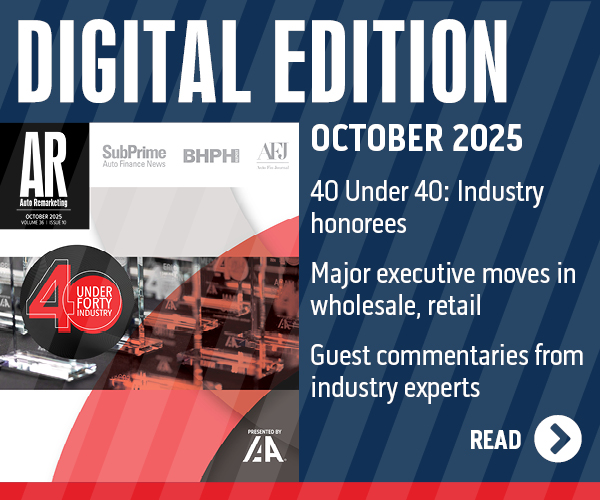Sonic Talks Used Inventory, Pricing Initiatives

Sonic Automotive headquarters, Charlotte, N.C.
By subscribing, you agree to receive communications from Auto Remarketing and our partners in accordance with our Privacy Policy. We may share your information with select partners and sponsors who may contact you about their products and services. You may unsubscribe at any time.
When Sonic Automotive held its conference call to discuss second-quarter results on Tuesday, on top of a record used-sales performance, the focus was on a series of initiatives the dealer group is either rolling out or beginning to reap the benefits of this year.
During the call, investor interest circled around Sonic’s True Price strategy, the Sonic Inventory Management System (SIMS) and its newest rollout — One Sonic-One Experience, the company’s stand-alone pre-owned model.
Jeff Dyke, Sonic’s executive vice president of operations, contributed much of the company’s used success in Q2 to SIMS, which the company finished rolling out in February of 2013.
The system was to play a large part in meeting the company’s goal of 100 pre-owned sales per store per month — a goal which Sonic reached this past May.
Not only did the company sell a record 28,514 pre-owned units in Q2, but it also reached 100 used unit sales per-store in May and 93 units pre-month for the second quarter as a whole.
The company has been ramping up used volume using its new inventory management system, and Dyke said, “We are going to get more aggressive in terms of our pre-owned volume in the coming quarters.”
When asked where the company is finding the majority of its used inventory, Dyke pointed to its auction partners.
Subscribe to Auto Remarketing to stay informed and stay ahead.
By subscribing, you agree to receive communications from Auto Remarketing and our partners in accordance with our Privacy Policy. We may share your information with select partners and sponsors who may contact you about their products and services. You may unsubscribe at any time.
“We are working with our auction partners, Manheim specifically, to pinpoint cars before they even get to the auction, so we can fulfill our needs,” he said.
Management explained though they are acquiring some off-lease vehicles, most of the inventory is coming from working with their auction partners as well as capitalizing on customer trade-ins.
“We don’t ever have trouble getting inventory — if you have the right systems and processes in place to get them, there are plenty of used vehicles,” Dyke added.
One Sonic–One Experience Takes Off
The company’s success with SIMS may be most visible through the One-Sonic-One Experience beta testing at pilot store Town and Country Toyota in Charlotte, N.C.
Dyke said the store is projected to see an increase in used volume of 21 percent year-over-year, based on recent projections.
David Smith, vice chairman at Sonic, took time during the call to point out the goals of the new standalone pre-owned store model:
“The objective is to put the power in the customer’s hands where they can enjoy the automotive buying experience with one associate, at one price, in one hour,” Smith said.
“We believe our experience will be unique in the industry and will improve transparency and expand trust and will result in greater market share, higher customer retention and increased profitability,” he continued.
A full version is in beta testing at the Toyota pilot store, and the “Experience” will be fully implemented in the Charlotte market by the end of the year, he said.
“We expect the company-wide implementation will take 18 months after the Charlotte pilot,” Smith added.
The new SIMS inventory tool works in concert with both the no-haggle True Price pricing methodology as well as the standalone pre-owned store model, Dyke pointed out.
“So the idea there is to not average three pencils to negotiate a price. Our pricing tool really uses algorithms on a ZIP-code basis and focuses on what other dealers are selling cars for — not what they are pricing cars for, but what the transaction prices are — and this allows us to price accordingly on a minute-to-minute basis, if we wanted to,” Dyke said.
“The whole idea here is we can reduce the amount of time it takes to buy a car. I spend a lot of time in the store (Town and Country Toyota) on Saturday, and the feedback from the customers was amazing. We literally penciled a deal with products in less than a minute, and that is the system and the algorithms working together. So you can image when the store gets all trained up advertising and marketing starts, what is going to happen,” Dyke continued.
“We have had great returns early on … it all works together,” he added.
Will No-Haggle Take Over Negotiation?
Also key to the company’s One Sonic-One Experience model is a no-haggle pricing environment.
With the company’s plan to roll out the rest of the One Sonic-One Charlotte stores over the rest of the year — with an aggressive marketing and advertising plan to go along with the move starting in October — investors were curious as to whether the company had experienced any backlash from dealers over the no-haggle pricing strategy it is pushing in both new and used.
Dyke explained all dealers are on board as of 2014.
Dyke said, “We have had nothing but great support here the first six months of the year. All our stores are begging us to move faster on our One-Sonic rollout.”
That said, dealers were a bit wary in years past, but Dyke said once they saw how the system worked and the potential there, it didn’t take long to gain full support.
“The industry is going to change, and we are just going to change a bit ahead of it. Many of them (Sonic dealers) participated in developing all this,” Dyke said.
As to whether the no-haggle pricing model will put a damper on gross profit per used unit in the future, Dyke didn’t seem too worried.
The exec explained GPU may take a dip or stay flat in the beginning, but the main goal is to grow market share — and gross profit is expected to eventually follow suit.
As to whether no-haggle pricing will grow beyond CarMax and Sonic and spread to other publically traded dealer groups remains to be seen.
But Dyke is confident the trend will catch on.
“There are certainly other dealers who are in a wait-and-see mood. Dickering is something that is going away. The experience you provide is going to be what drives sales … there is no question that at some point in time, the industry is going to make a step toward no-haggle pricing,” Dyke concluded.
For more on Sonic's Q2 financial results, see the below Auto Remarketing story:
Sonic Breaks Used Sales Record & Hits Goal of 100 Units Per Store


